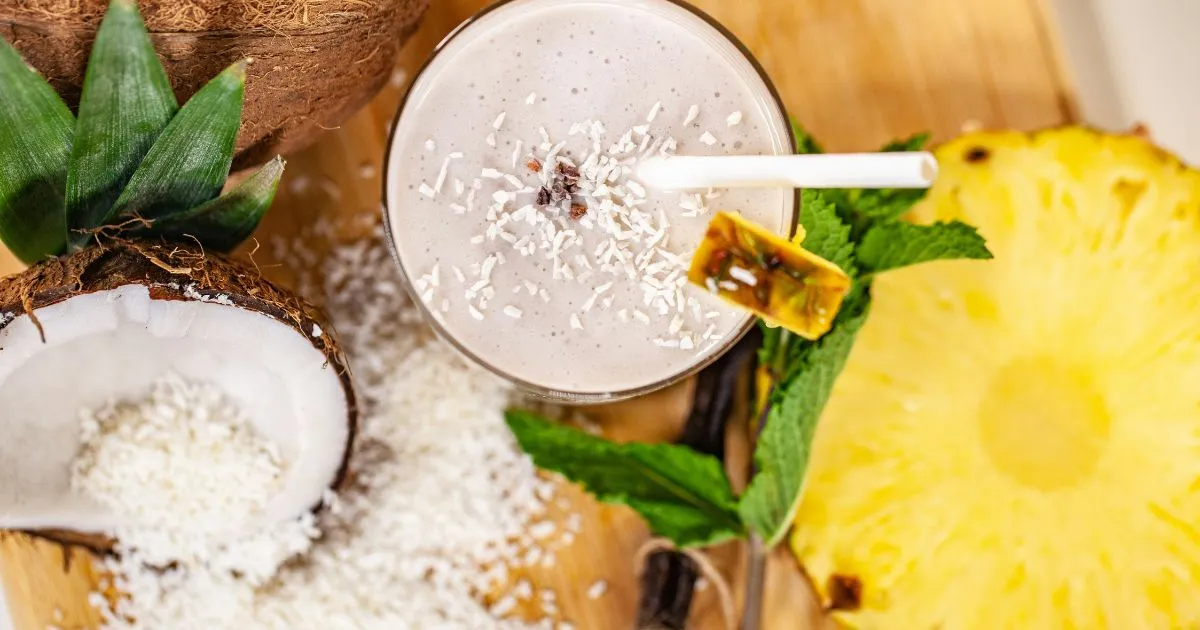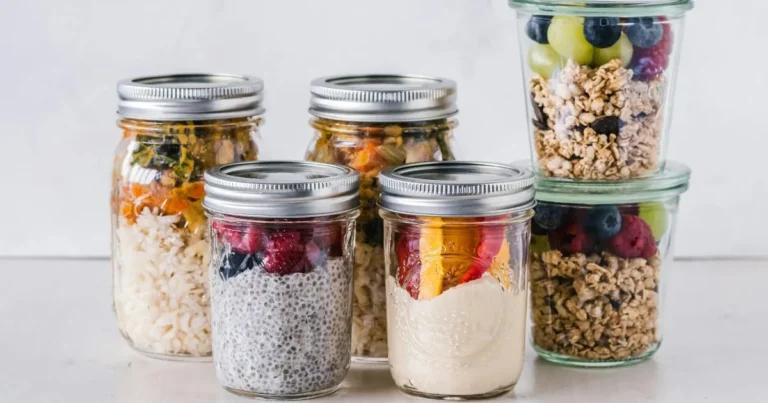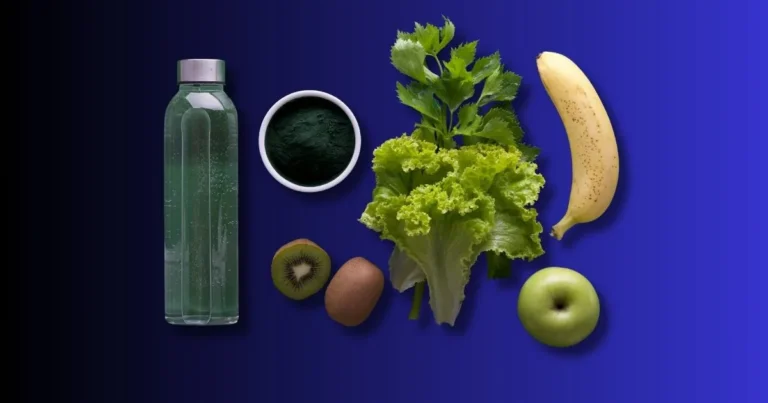Best Sources of Protein: Unlocking the Power of Nutrition for Your Best Self
Imagine waking up each day feeling energized, confident, and ready to conquer your challenges—all because you’ve made smart food choices. Protein isn’t just for bodybuilders or fitness enthusiasts; it’s the building block that supports your body’s repair, recovery, and overall health. In this comprehensive guide, you’ll learn everything you need to know about incorporating the best sources of protein into your diet. By the end, you’ll feel empowered to create balanced meals that nourish your muscles, boost your energy, and help you thrive.
In this article, we’ll explore the importance of protein, the best animal- and plant-based protein sources, the science behind protein quality, how much protein you need, and practical tips for integrating protein-rich foods into your daily routine. Let’s dive in and transform the way you think about your diet!
Table of Contents
Understanding Protein: Why It Matters for Your Health
Protein plays a pivotal role in every cell of your body. It’s not only the building block for muscles, skin, and bones but also essential for producing enzymes, hormones, and antibodies that protect your immune system.
What Is Protein?
- Definition and Role: Protein is a macronutrient made up of amino acids. It helps repair tissues, build new cells, and is vital for maintaining a strong immune system.
- Essential vs. Non-Essential Amino Acids: Your body can synthesize some amino acids, but nine of them—known as essential amino acids—must come from your diet.
- Impact on Metabolism: Protein is crucial for metabolic processes, including enzyme production, energy transport, and nutrient absorption.
Tip for You: Think of protein as the “construction material” for your body. Just as a sturdy house needs quality bricks, your body requires high-quality proteins to maintain strength and resilience.
The Importance of Protein in Your Diet
- Muscle Repair and Growth: Protein is critical for repairing muscle fibers after exercise, helping you recover faster and build lean muscle.
- Satiety and Weight Management: Including protein in your meals helps you feel fuller longer, which can curb cravings and assist in weight management.
- Overall Vitality: Adequate protein intake supports energy levels, hormonal balance, and even skin and hair health.
Key Data Point: Research indicates that a protein-rich diet can reduce muscle loss with age and improve overall metabolic health. Be sure to choose a variety of protein sources to cover all your essential amino acids.
Top Animal-Based Protein Sources
Animal-based proteins are considered “complete” because they contain all nine essential amino acids in ideal proportions for your body.
Lean Meats: The Muscle-Building Champions
- Chicken and Turkey: Skinless chicken breasts and turkey are excellent options—rich in protein and low in fat.
- Lean Beef: Choose lean cuts such as sirloin or round steak to get a high protein punch without too much saturated fat.
- Pork Tenderloin: Another lean source that provides quality protein while keeping fat content in check.
Did You Know? A 3-ounce serving of chicken breast can provide approximately 25-30 grams of protein, making it an efficient way to meet your daily requirements.
Seafood: Omega-3s Meet High-Quality Protein
- Fatty Fish: Salmon, mackerel, and tuna not only provide high-quality protein but are also rich in omega-3 fatty acids that support heart and brain health.
- Shellfish: Options like shrimp and scallops offer protein with fewer calories, perfect for those watching their intake.
Pro Tip: Incorporate fish into your meals a couple of times per week to benefit from both protein and essential fats that reduce inflammation and improve cardiovascular health.
Dairy and Eggs: Versatile and Nutrient-Dense
- Greek Yogurt and Cottage Cheese: These dairy products are not only packed with protein but also provide calcium, which is vital for bone health.
- Eggs: With around 6-7 grams of high-quality protein per egg, they are a versatile ingredient you can enjoy boiled, scrambled, or as part of an omelet.
Quick Tip: Combine eggs with vegetables for a nutrient-rich breakfast that supports sustained energy levels throughout your morning.
Top Plant-Based Protein Options for a Balanced Diet
Plant-based proteins can be just as effective when you ensure variety throughout your day. They often come with the bonus of fiber, vitamins, and antioxidants.
Legumes and Pulses: The Versatile Protein Powerhouses
- Beans and Lentils: Black beans, chickpeas, and lentils are excellent protein sources that also deliver a hearty dose of fiber.
- Peas: Green peas are not only protein-rich but also provide essential micronutrients like vitamin C and folate.
Usage Idea: Add lentils to soups, make a bean salad, or blend chickpeas into hummus for a quick protein boost in your snacks.
Nuts, Seeds, and Grains: Small but Mighty
- Nuts and Nut Butters: Almonds, peanuts, and cashews are great sources of protein and healthy fats. Just a handful can significantly boost your intake.
- Seeds: Chia, hemp, and pumpkin seeds offer protein along with omega fatty acids and minerals.
- Whole Grains: Quinoa, farro, and barley aren’t just high in protein—they also provide sustained energy through complex carbohydrates.
Tip for You: Sprinkle hemp or chia seeds over your salad or mix them into your smoothie to effortlessly increase your protein and nutrient content.
Soy Products: The Complete Plant Protein
- Tofu, Tempeh, and Edamame: These soy-based foods are among the few plant proteins that are “complete,” meaning they provide all essential amino acids.
- Textured Vegetable Protein (TVP): A versatile option that can be used in place of meat in many dishes.
Fun Fact: Tempeh is not only high in protein but also offers a rich, nutty flavor that can transform stir-fries and salads into protein-packed meals.
Comparing Animal vs. Plant Protein: Pros and Cons
When choosing your protein sources, it’s important to understand the benefits and limitations of both animal and plant proteins.
Benefits of Animal Protein
- Complete Amino Acid Profile: Animal proteins offer a balanced mix of all essential amino acids.
- High Bioavailability: Your body absorbs animal protein more efficiently.
- Rich in Micronutrients: They are excellent sources of vitamins like B12 and minerals such as iron and zinc.
Advantages of Plant Protein
- Lower in Saturated Fat: Plant proteins typically contain less unhealthy fat, reducing the risk of cardiovascular issues.
- High in Fiber: The added fiber in plant foods supports digestion and helps maintain stable blood sugar levels.
- Environmental Benefits: Plant-based proteins generally require fewer natural resources and produce less greenhouse gas compared to animal proteins.
Considerations for a Balanced Diet
- Variety is Key: Combining different sources of protein ensures you get all the essential amino acids regardless of whether the protein is plant-based or animal-based.
- Dietary Preferences and Needs: Your personal health goals, ethical beliefs, or dietary restrictions may guide your choice between animal and plant proteins.
Action Step: Experiment with blending both protein types in your meals. For example, add a side of quinoa to a chicken stir-fry, or enjoy Greek yogurt topped with a sprinkle of chia seeds.
Protein Intake: How Much Do You Really Need?
Understanding your protein requirements is crucial to meet your energy, muscle repair, and overall health needs.
Calculating Your Protein Needs
- General Guideline: Most adults should aim for about 0.8 grams of protein per kilogram of body weight. For active individuals, the requirement can increase to 1.2–2.0 grams per kilogram.
- Factors to Consider: Your age, activity level, and health goals can influence your protein needs. Athletes, older adults, and those recovering from illness may require more.
Example: If you weigh 70 kilograms (approximately 154 pounds) and lead a moderately active lifestyle, your daily protein requirement might be around 56 grams or more.
Tools and Resources
- Online Calculators: Use protein calculators available on health websites to determine your specific protein requirements.
- Consult a Professional: A registered dietitian can provide personalized advice based on your unique health profile.
Remember: Balancing protein intake throughout the day is essential for maximizing its benefits. Aim to include a quality protein source in every meal and snack.
Practical Tips for Incorporating Protein Into Your Daily Diet
Now that you know what the best sources of protein are and how much you need, here are some actionable tips to seamlessly integrate protein into your daily routine.
Meal Planning and Preparation
- Plan Ahead: Dedicate time each week to plan your meals. Ensure that each meal contains a balance of protein, healthy fats, and carbohydrates.
- Batch Cooking: Prepare large portions of protein-rich foods like grilled chicken, tofu, or beans, and store them in the refrigerator. This way, you always have a quick protein option ready.
- Variety is Vital: Rotate between different protein sources to keep your meals interesting and nutritionally balanced.
Quick and Easy Protein Boosters
- Smoothies: Blend Greek yogurt or a plant-based protein powder with fruits and a handful of spinach for a nutritious breakfast or snack.
- Snacks: Keep nuts, seeds, and protein bars handy for a mid-morning or afternoon energy boost.
- Salads and Bowls: Top your salads with grilled chicken, boiled eggs, tofu cubes, or a sprinkle of hemp seeds. Add beans or lentils for extra fiber and protein.
Budget-Friendly Protein Options
- Eggs: Inexpensive and versatile, eggs can be incorporated into many meals.
- Legumes: Beans, lentils, and chickpeas are cost-effective, shelf-stable, and nutritionally dense.
- Seasonal Produce: Opt for seasonal fruits and vegetables that can complement your protein sources and enhance meal variety.
Insider Tip: Experiment with spice blends and marinades to transform simple protein sources into gourmet meals that are both delicious and satisfying.
Frequently Asked Questions (FAQ)
What Are the Best Sources of Protein for Muscle Building?
For building muscle, you need high-quality, complete proteins. Animal sources such as lean meats, fish, eggs, and dairy are excellent choices. If you prefer plant-based options, focus on soy products like tofu, tempeh, and edamame, and consider combining them with other protein-rich plant foods to ensure you get all essential amino acids.
Can I Get Enough Protein on a Plant-Based Diet?
Absolutely. By eating a variety of plant-based proteins—such as legumes, nuts, seeds, whole grains, and soy products—you can easily meet your protein needs. The key is diversity. Combining different sources throughout the day will provide you with all the essential amino acids necessary for optimal health.
How Do I Know How Much Protein I Need Each Day?
Your protein needs depend on your body weight, activity level, and health goals. A general guideline is 0.8 grams per kilogram of body weight for sedentary adults, increasing to 1.2–2.0 grams for active individuals. Using online protein calculators or consulting with a registered dietitian can help tailor your intake precisely.
Is It Better to Eat Protein at Breakfast?
Yes. Consuming protein at breakfast helps maintain satiety, stabilizes blood sugar levels, and prevents mid-morning energy crashes. Consider adding eggs, Greek yogurt, or a protein smoothie to your morning routine to kickstart your day with sustained energy.
Are Protein Shakes a Good Substitute for Whole Foods?
While protein shakes can be a convenient option, especially when you’re on the go, they shouldn’t replace whole foods entirely. Whole foods provide additional nutrients like fiber, vitamins, and minerals that protein shakes often lack. Use shakes as a supplement, not as a complete replacement.
Can I Mix Animal and Plant Proteins?
Mixing both animal and plant proteins can be an excellent strategy to balance your diet. Animal proteins offer high bioavailability and complete amino acid profiles, while plant proteins provide fiber and essential antioxidants. Combining them can give you the best of both worlds, ensuring comprehensive nutrition.
Conclusion: Embrace a Protein-Rich Lifestyle for a Healthier You
Protein is the cornerstone of a vibrant, healthy life. Whether you choose animal-based sources for their complete amino acid profile or opt for plant-based proteins to benefit from added fiber and antioxidants, your body thrives on variety and balance. By planning your meals, mixing different protein sources, and paying attention to your body’s needs, you can optimize your nutrition, support muscle growth and repair, and maintain steady energy levels throughout your day.
Take a moment to reflect on your current eating habits. Ask yourself: Are you getting enough protein at every meal? Could you add a handful of nuts to your salad or swap out a protein bar for a more balanced snack? Small, mindful changes can make a big difference in how you feel, both physically and mentally.
Call to Action:
Start your journey to better health today by assessing your protein intake. Experiment with new recipes, mix and match protein sources, and share your favorite high-protein meals with friends and family. Your body deserves the best—fuel it with quality protein and watch your energy, strength, and overall well-being soar!
Embrace the power of protein and unlock your body’s potential for a healthier, happier life. Enjoy every bite, and let your meals be a celebration of the nourishment that empowers you every day.
By integrating these protein-rich foods into your daily routine and focusing on variety, you’re not only supporting your physical health but also paving the way for a more energetic and fulfilling life. Remember, nutrition is a journey—take it one step at a time, and soon you’ll feel the transformative benefits of a well-balanced, protein-powered diet.




